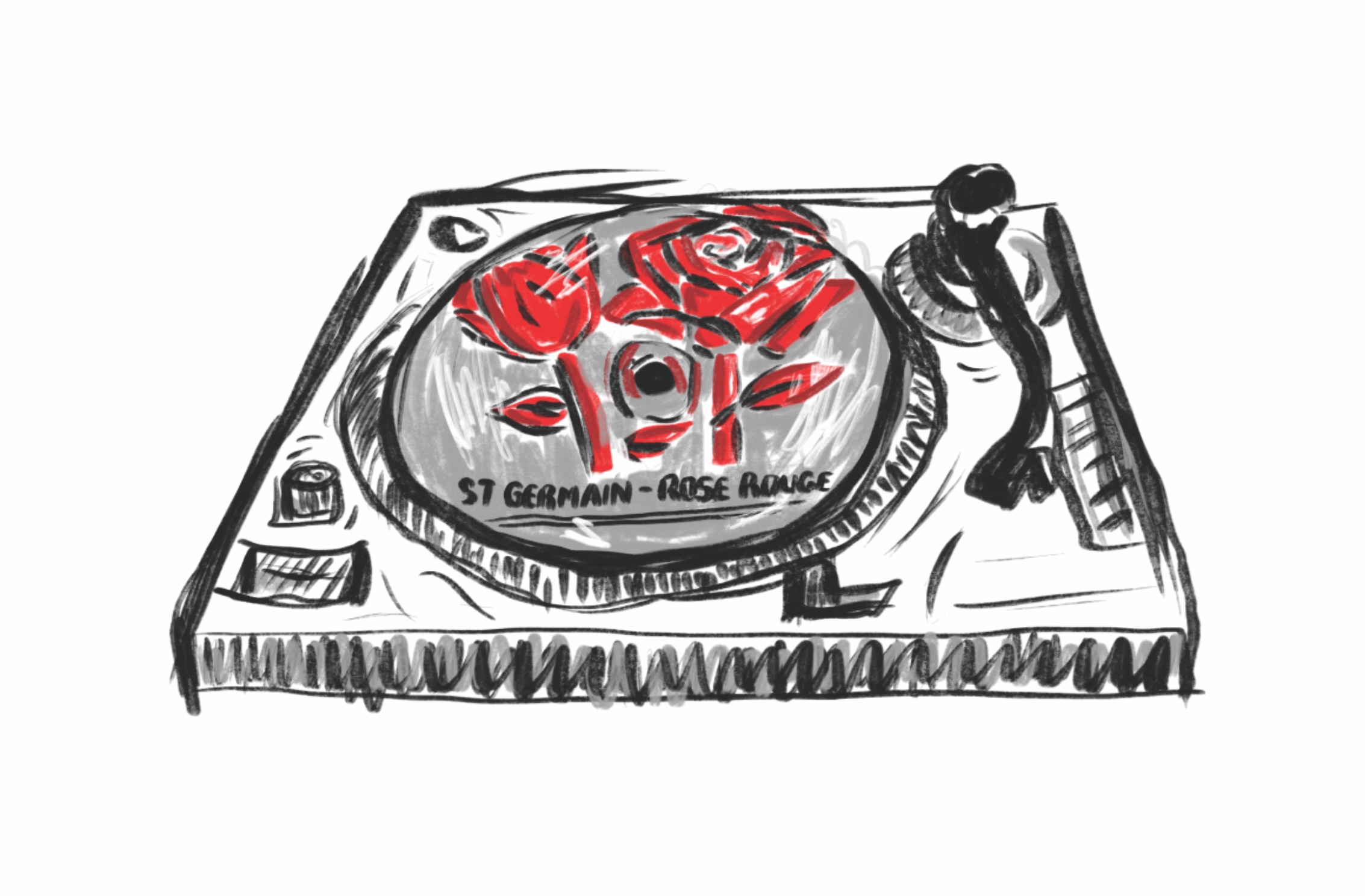St Germain & Ella Smith
September 27, 2024
 Dila Cakir
Dila CakirThe song begins with drums and bass. Sampling from the live version of “Take Five” by the Dave Brubeck Quartet and looping the track, St Germain immerses listeners in a classic piece. After 33 seconds, the voice of Marlena Shaw is introduced, clipped from the song “Woman of the Ghetto.” St Germain has her repeat a few lines before bringing in some trumpet at one minute and 13 seconds. The voice, trumpet, drums and bass continue together in a meditative groove, slowly changing dimension as both a subtle clap sound and a quiet but prominent beat are brought in. St Germain transforms the two traditional jazz compositions into hypnotic house music with patience and detail. Known for his fusion of jazz and house, St Germain is an artist/producer whose work debuted in the late 90s. He has continued creating, and his most recent release dates to this year.
I spoke with Ella Smith, a very good friend of mine who visited me a few weekends ago, to pick her brain on the piece and see how she felt about St Germain’s work. Prior to listening to “Rose rouge,” Ella did not know about St Germain, and she was not prepared for what she was about to hear.
I sat next to Ella on the couch in my common room and asked, “Will you listen to this song and then answer some questions?” I handed her my headphones, and played her the song. I watched her face as she listened, gauging indifference.
After she took out the earbuds, she told me, “At first I liked the song, but halfway through or two thirds of the way, it sounded like a loop, and I didn’t really enjoy that.” She continued to explain how the electronic aspects of the song reminded her of night life, and considering that it was morning, she felt she was in “kind of a weird space to listen to it.”
She commented on the tension evoked by the song through its dynamic coalescence. St Germain’s looping of the drums in “Rose rouge” establishes suspense and build up, but according to Ella, “the song just … slowly ended, so I guess I left feeling unsatisfied.”
Ella told me that she believes, “House is a genre where you have to be in a certain state of mind or setting to really enjoy it.” Before playing “Rose rouge” for Ella, I did not consider the fact that she would associate house music with a location or mood. Her internal association of house music with the night deeply contributed to whether she could enjoy it or even find it interesting. When asked if she would listen to songs like “Rose rouge” in the future, Ella said she didn’t think so.
Ella’s perspective on St Germain’s track was enlightening for a couple reasons. First, Ella does not typically listen to house music. I was under the impression that St Germain’s electronic style was not as prominent as that of other producers in his field. However, my music knowledge regarding the house genre differs from that of Ella’s, mainly because she does not listen to house music at all. Perhaps Ella felt deceived, led to believe that she was listening to a jazz song when she was truly hearing repetitive drum and vocal samples.
Second—although perhaps this reason should be first—Ella barely had her eyes open for long when I asked her to listen to a song for me. While talking about “Rose rouge,” Ella frequently mentioned her “state of mind” and how it did not align with the vibe of the song.
Evidently, the qualities of songs are affected by when, where, how and to whom they are being played, and I did not take these factors into account when I proposed this experiment to my friend.
Nevertheless, I also feel somewhat inspired to take the basic assertions posed by Ella regarding “state of mind” and play this piece for her again in different conditions to see if she has a separate response. What excites our minds about listening to songs in distinct spaces? How many different components go into the way we interpret musical experiences?
I often find music to be a source of healing, contemplation and emotional release. When already existing music is manipulated through sampling, producing and DJing, the healing, introspection and emotional release may also be improved upon. I look forward to continuing to adjust the variables that make the act of listening to a song fun, reflective or awful and learning just how flexible these emotions are.

Comments
Before submitting a comment, please review our comment policy. Some key points from the policy: